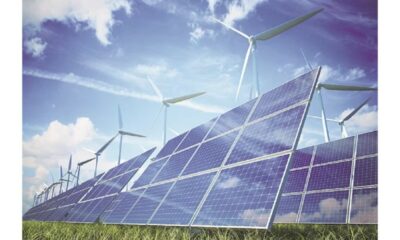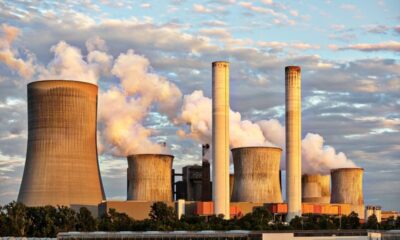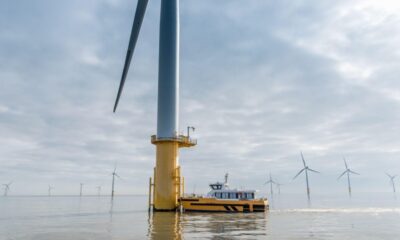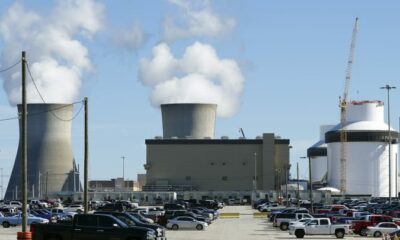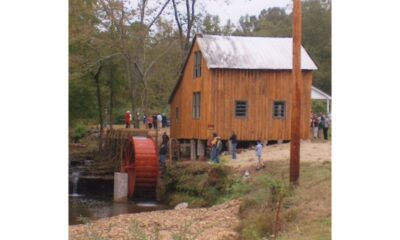World
Germany Leads the Way in Renewable Energy with Closure of Nuclear Plants
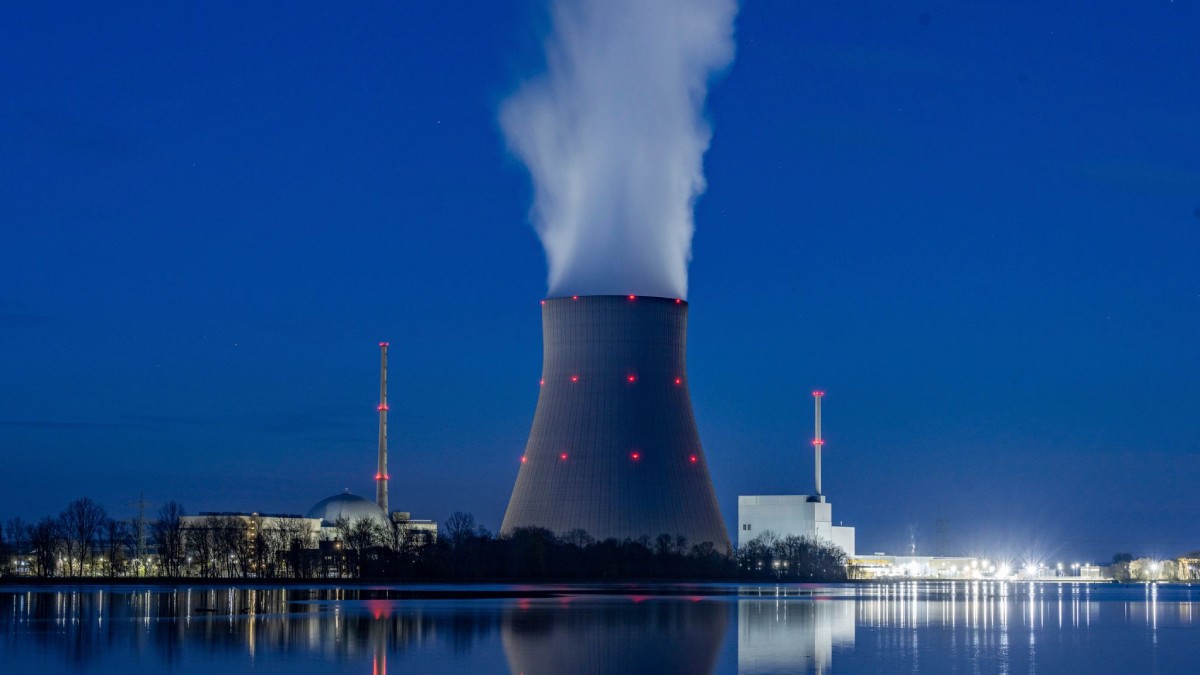
The last three nuclear reactors in Germany are about to be shut down. It is the realization of a long-held dream for the country’s Green Party. Despite Fukushima, nuclear power is experiencing a revival in Asia.
Toward the end of March, Germany’s Environment Minister Steffi Lemke of the Green Party used only a few words to stop the question that has saved the country in tension for years: “The risks of nuclear power are ultimately uncontrollable; that’s why the nuclear phase-out makes our country safer and avoids more nuclear waste.”
Up until April 15, nuclear power was used.
The government was once again involved in a nuclear power dispute the last year. The governing SPD, Greens, and FDP had agreed in their coalition agreement to adhere to Germany’s nuclear phase-out decision, made by Chancellor Angela Merkel in 2011. As a result, the last nuclear power plants were scheduled to shut down at the end of 2022.
However, Russia’s invasion of Ukraine changed everything due to the government’s fear of an energy shortage and the cessation of Russian gas supplies to Germany. Finally, Chancellor Olaf Scholz decided to extend the power stations’ operating period until April 15, 2023.
A decades-long dispute.
The dispute over nuclear power has divided people for as long as it has, particularly in former West Germany. At Kahl in Bavaria, on June 17, 1961, a German nuclear power plant provided the grid with electricity for the first time.
On April 15, the three remaining German nuclear power plants will finally shut down after around 22,596 days and a lot of heated debate.
Even though this hasn’t happened in about 20 years, 19 nuclear power plant units supplied up to a third of the country’s electricity. Before the unification of West Germany, opposition to nuclear power drove hundreds of thousands of mostly young people onto the streets in the 1970s and 1980s. Then, in 1986, the disaster at Chernobyl in the then-Soviet Union seemed to back up warnings about the dangers of nuclear power. However, for many decades, the various governing parties—the conservative Christian Democrats (CDU), the SPD, and the FDP—strongly supported the use of nuclear power.
Nuclear Power in Europe
Nuclear power was phased out more quickly in other European countries. Sweden and Italy, which also decided to shut down their last two nuclear power plants following the disaster, were the forerunners in ending nuclear power shortly after Chernobyl. The decision was still in effect in Italy; In 1996, Sweden reversed the phase-out. Six nuclear power plants there produce approximately 30 percent of the country’s electricity needs today.
While Belgium is delaying its planned phase-out, other European nations, such as the Netherlands and Poland, intend to expand their nuclear power systems. With 57 reactors, France has forever been Europe’s leading nuclear power country, and it intends to stay that way. In total, 13 of the 27 EU countries that make up the EU plan to use nuclear power in the coming years, and many of them plan to increase their capacity.
The first German phase-out was in 2002
Jürgen Trittin, a member of the Green Party at the time, pushed through Germany’s first plan to phase out nuclear power in 2002. This was later softened by subsequent governments, but the horrific reactor disaster in Fukushima, Japan, in 2011 finally sealed the fate of German nuclear power plants. Angela Merkel (CDU), the chancellor at the time, made the following decision: That was the end of Germany’s nuclear energy.
Trittin is still a Green Party member of the Bundestag today. “Yes, this is an important day, because it brings a story to an end, namely that of the civilian use of nuclear energy,” he said of this week’s final shutdown. “But it’s not the end of nuclear energy in Germany, we’re still dealing with the fact that we’ll have to safely store the world’s most dangerous waste for a million years,” he told.
Arguments for nuclear energy
But is nuclear energy really dead in Germany after this? In light of an energy crisis that it claims has been suppressed rather than resolved, KernD, an association that represents the interests of nuclear technology in Germany, informed DW that it was not a good idea to eliminate nuclear power.
“Also, in view of climate policy and the very unfavorable development in electricity generation last year — due to a sharp increase in coal-fired power generation — the shutdown of three functioning nuclear power plants with a low greenhouse gas footprint beggars belief,” a KernD spokesperson said.
“More nuclear power would make more sense than none at all, considering supply security, environmental and climate protection, and competitiveness.”
Nuclear power around the world
The International Atomic Energy Agency (IAEA) reports that there are currently 422 nuclear reactors operating worldwide, each of which is approximately 31 years old on average.
However, a recent IAEA report stated that there was no sign of a revival in nuclear power. Nuclear power generation peaked at 17.5% in 1996 and fell below 10% in 2021, the lowest level in four decades.
Additionally, according to Jürgen Trittin, “nuclear power is not competitive,” which is why no one wants to make significant investments in technology. New nuclear power plants are extremely expensive, frequently necessitate co-financing with public money, and frequently experience delays and opposition from local authorities.
Asia increases its nuclear capacity
Nonetheless, new nuclear power plants are in the works, particularly in India, China, and Russia. China wants to build 47 more plants, and there is almost no civil society there to fight new projects. China already has more nuclear energy production than France.
Because nuclear power produces so little carbon dioxide, it is frequently argued that increasing its production protects the environment. Indeed, even Japan wants to get back to more nuclear power, notwithstanding the 2001 earthquake that made a few nuclear reactors break in progression, driving the initial closure of a few nuclear power plants.
However, some reactors have been restarted since then. Now, the Japanese government has made a decision: The nation with limited resources wants to construct new reactors and allow its existing ones to operate for up to 70 years. As if it were his motto, Prime Minister Fumio Kishida recently declared, “We must make full use of nuclear energy.” According to surveys, support is gradually rising among the Japanese population despite a lengthy period of opposition.
-

 Business4 weeks ago
Business4 weeks agoNayef Doleh Examines International Humanitarian Fundraising Strategies
-

 Business4 weeks ago
Business4 weeks agoHow to fill MSME Form 1? Step-by-Step Guide
-
Business4 weeks ago
From Marine to Chief: The Leadership Journey of Sean Mannix
-

 Festivals & Events3 weeks ago
Festivals & Events3 weeks agoGoogle Celebrates Cherry Blossom Season with Animated Doodle
-

 Gadget3 weeks ago
Gadget3 weeks agoAfter Grand Success on BLDC Ceiling Fan, Eff4 Is Launching Smart Bulb
-

 Sports4 weeks ago
Sports4 weeks agoKabaddi World Cup 2025: Full Schedule, Fixtures, Match Date, Time and More
-

 Book4 weeks ago
Book4 weeks agoNavigating Life’s Rope Bridges: Dr. Lynda’s Transformative Guide to Change
-

 Business2 weeks ago
Business2 weeks agoPrakash and Kamal Hinduja: Driving Social and Environmental Change



